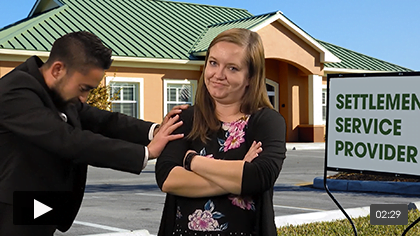Boomtime lending practices have permanently changed the housing industry, per studies presented at a recent Federal Reserve Bank of San Francisco (FRBSF) conference.
The studies analyzed various sets of economic data to determine whether today’s flaccid economy is the result of cyclical or structural economic factors, comparing changes in the general economy with those specific to the housing industry.
Cyclical changes occur in step with changes in the business cycle, and are easily reversed. In contrast, structural changes are long-term or permanent changes to certain industries which require equally long-term economic adaptations.
The risky lending practices of the Millennium Boom led to an abnormally elevated volume of cash-flush lending activity. Subprime lending and the practice of bundling loans into mortgage backed securities (MBS) increased dramatically, heightening demand for housing. This in turn created an artificial increase of activity for those who supplied housing — builders, their employees and their stockholders.
This demand was ultimately unsustainable. The resulting correction greatly restricted credit supply, which has born multiple branches of shriveled fruit: fallen homebuilder stocks, fewer loans, fewer homes built and fewer construction jobs.
While the high rate of general unemployment is cyclical, meaning it will return again to previous levels, today’s tightened credit standards and the rate of employment in the homebuilding industry are structural changes, wrought by permanent reactions to the cataclysmic shock of the housing boom and bust, and will not likely return to 2006 levels.
first tuesday take
Homebuilding is not the only area of real estate which has been structurally impacted by the housing bust. In other words, don’t expect the anomalous high volume of the Boom to return any time soon. That is not the “recovery” we’re going to see after the massive paradigm shift described above.
Permanent changes such as the Dodd-Frank Act, the formation of the Consumer Financial Protection Bureau (CFPB) and development of the qualified residential mortgage (QRM) are part of a concerted reaction against reckless lending. Combined with a more modestly-sized homebuilding industry, these are forward-looking changes which will foster a return to greater real estate market stability.
Related article:
What does this mean to practicing agents?
Future home sales will be slower and sparser than before — see the pre-Boom levels for a better idea of what to expect. Gone are the days of easy money for every newly licensed real estate agent. The market will sustain only those agents who are willing to learn their trade and work hard on learning how to use their license in their chosen market.
For bigger brokerages, this means the days of “churn-and-burn” agent hiring will no longer be a financially lucrative practice.
Related article:
Agents and brokers alike need to think of their real estate licenses as a Swiss Army knife. Single family residence (SFR) sales aren’t the only blade you’ve got, so don’t let the others rust into immobility. Sharpen your property management skills, consider branching into investment or commercial real estate in addition to residential practice, and be proficient in every field available to you. This is the key to survival in a leaner market.
Related articles:
Re: “Structural and Cyclical Economic Factors” from Federal Reserve Bank of San Francisco


















